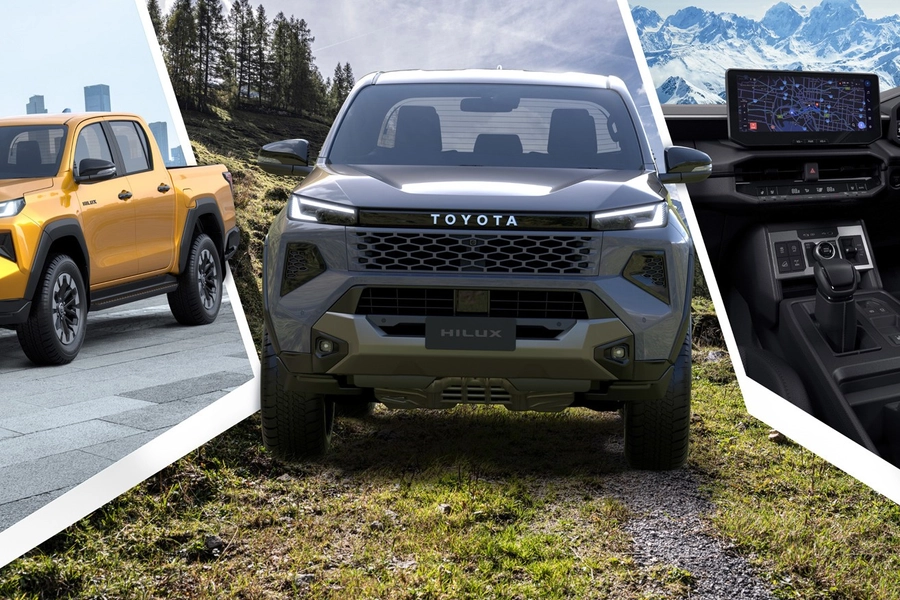The Toyota Hilux has been a global symbol of reliability and toughness for over five decades. Now, Toyota has introduced an all-new generation of the Hilux that brings the iconic pickup into a new era of multi-powertrain versatility. For the first time, the Hilux will be offered with a fully battery-electric variant, alongside hybrid, petrol, and diesel options. This marks a strategic shift for Toyota, aligning with its broader “multi-powertrain” approach, offering customers diverse powertrain options depending on local market needs, regulations, and infrastructure readiness.
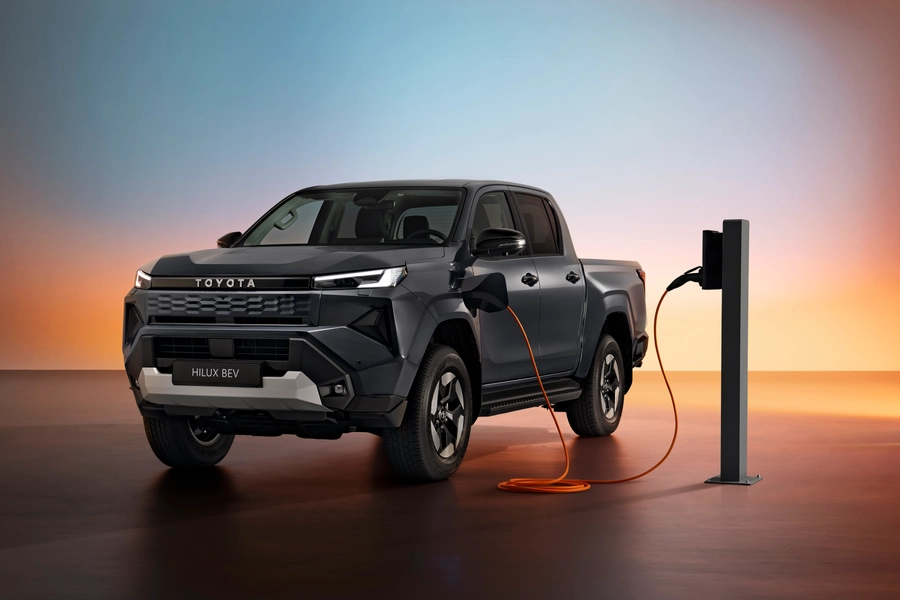
The new Toyota Hilux promises to combine the rugged DNA of its predecessors with modern engineering, enhanced safety features, and digital cabin technology—making it one of the most comprehensive updates in the model’s long-running history.
Toyota Hilux – Exterior Design
The ninth-generation Toyota Hilux follows a “Tough and Agile” design philosophy. The new model features a more assertive front fascia, with a prominent central bar carrying the Toyota badge and slimmer LED headlamps giving it a sharper look. The body lines are sculpted for improved aerodynamics while retaining the signature muscular stance that the Hilux is known for.
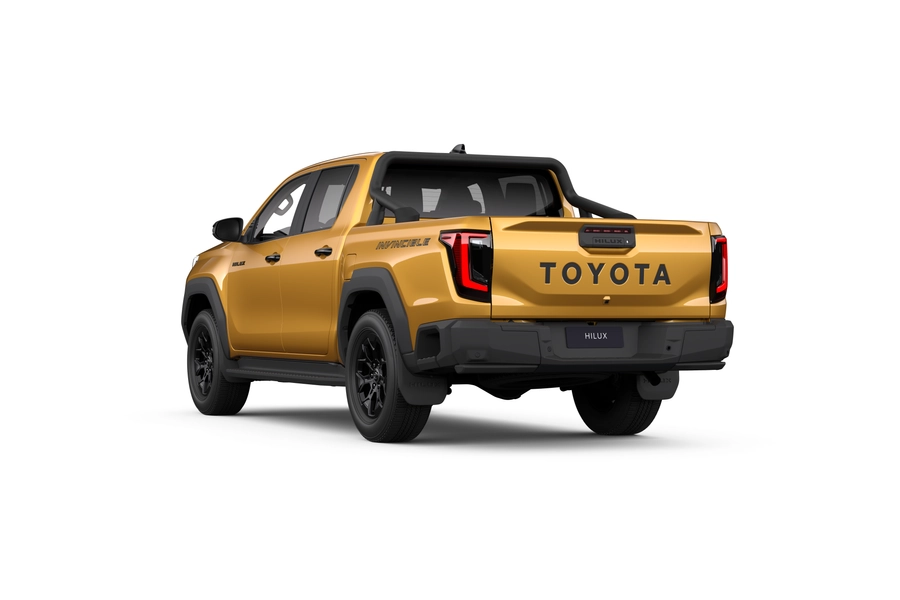
In the battery-electric version, the front grille has been reimagined with a closed-off design that signifies its electric identity. The overall silhouette remains practical, and Toyota has standardized the Double Cab body style across the lineup, catering to the growing demand for lifestyle pick-ups that double as everyday vehicles.
The new Toyota Hilux rides on redesigned alloy wheels and features subtle updates to the bed structure to improve payload versatility and towing stability.
Toyota Hilux – Interior Design
Inside, the new Toyota Hilux receives a significant overhaul with a stronger focus on comfort and technology. The cabin adopts a modern, horizontal layout with higher-grade materials and refined detailing. A new 12.3-inch digital driver display pairs with a 12.3-inch central infotainment touchscreen that supports connected features, wireless Android Auto, and Apple CarPlay.

The Hilux also introduces conveniences such as wireless smartphone charging, rear USB-C ports, and improved seat cushioning for long-distance comfort. The layout of off-road and drive controls has been rationalized for easier access, while the BEV variant gets a sleek shift-by-wire transmission selector that replaces the traditional gear lever.
Noise insulation and ride refinement have also been enhanced, addressing one of the few longstanding criticisms of previous Hilux generations.
Toyota Hilux – Powertrain
Perhaps the biggest leap in the new Toyota Hilux lineup is its diverse powertrain portfolio. Toyota will now offer the Hilux with diesel, petrol, mild-hybrid (48 V) and, for the first time, a fully electric powertrain.
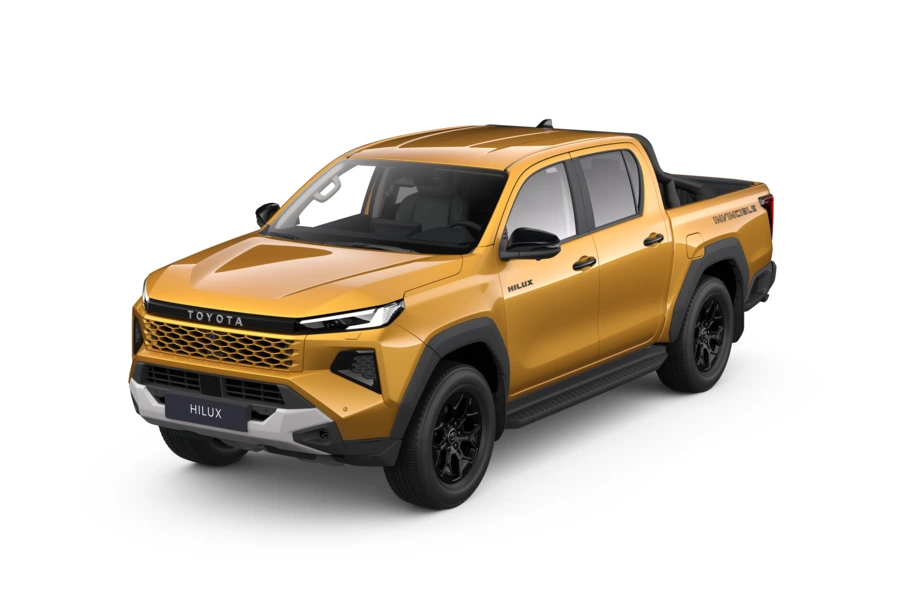
The battery-electric Toyota Hilux BEV features a 59.2 kWh lithium-ion battery pack paired with dual e-axles—front and rear—delivering a combined output of 193 hp. The diesel and petrol engines continue to cater to markets where rugged utility and long-range hauling remain priorities. The 48 V hybrid version bridges the gap, reducing fuel consumption and emissions while retaining the traditional mechanical 4WD system.
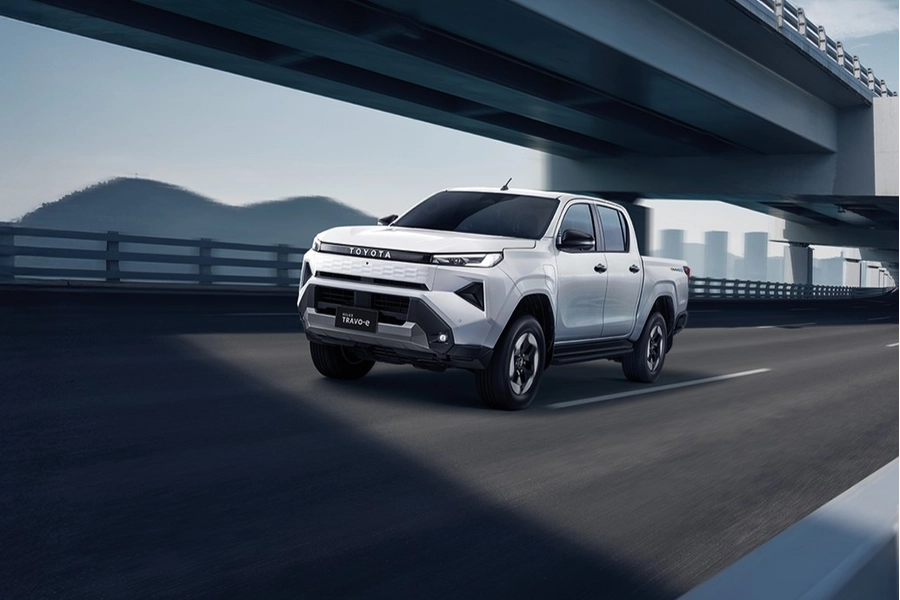
Across all variants, the new Hilux benefits from improved suspension geometry, electric power steering, and Toyota’s latest T-Mate driver-assist suite, which includes features like Low-Speed Acceleration Suppression, Proactive Driving Assist, and Emergency Driving Stop.
Toyota Hilux – Market Positioning
The Toyota Hilux has long been known as a workhorse, but its modern iterations have evolved into lifestyle vehicles catering to both business and personal use. With the new generation, Toyota intends to strengthen the Hilux’s role as a global model that adapts to diverse regional requirements. The Double Cab configuration is now standard globally, reflecting the growing preference for family-friendly pick-ups that blend utility with comfort.
Toyota’s multipath powertrain strategy allows the Hilux to remain relevant across developing and developed markets alike. The brand aims to position the Hilux not only as a durable pickup but also as a sustainable and technology-forward alternative in a segment facing increasing electrification pressure.
Toyota Hilux – Indian Market Outlook
In India, the Toyota Hilux has already carved a niche among lifestyle buyers, off-road enthusiasts, and premium SUV owners seeking something different. The current model, powered by a 2.8-litre diesel engine with manual and automatic transmission options, competes in a limited but growing segment.
The introduction of the 48-volt mild-hybrid system on the same 2.8-litre diesel engine in the Hilux’s SUV sibling—the Toyota Fortuner—earlier this year indicates that similar technology could soon find its way into the Indian-spec Hilux upon launch. This hybrid system delivers better low-end torque and improved efficiency without compromising on the vehicle’s rugged performance credentials.
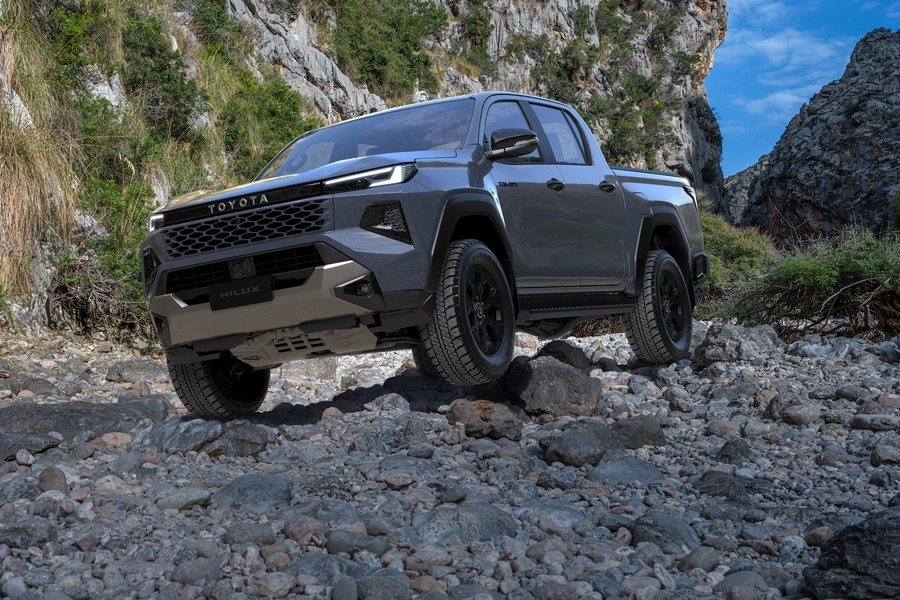
India’s electric infrastructure is still maturing, so the fully electric Hilux may not arrive immediately. However, Toyota’s emphasis on hybridization across its lineup, as seen with the Innova Hycross and Urban Cruiser Hyryder, suggests that an electrified Hilux variant could be introduced once local assembly and cost factors align.
Meanwhile, competition in the lifestyle pickup segment is expected to intensify. Mahindra is preparing a pickup version of the Scorpio N, showcased in 2023 as the Global Pik Up concept. This model will directly rival the Toyota Hilux when it enters production, aiming to combine domestic affordability with the rugged credentials of a global utility vehicle.
If Toyota manages to localize production and introduce hybrid tech, the Hilux could retain its edge through its reputation for reliability, brand value, and long-term dependability—factors that strongly influence Indian buyers in the premium utility segment.
Toyota Hilux – Rivals
The Toyota Hilux continues to face competition from global rivals like the Ford Ranger, Isuzu D-Max V-Cross, and Nissan Navara. While the Ranger offers advanced features and multiple powertrains, and the D-Max appeals with competitive pricing, the Hilux’s strengths remain its long-term dependability and superior build quality.
With the introduction of the battery-electric Hilux, Toyota also gains an early advantage in a space that few traditional manufacturers have entered. However, the key challenge will be balancing electric range and payload capacity two critical factors that determine a pickup’s real-world usability.

